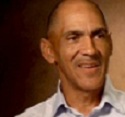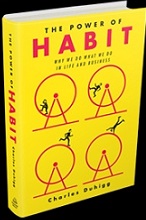Champions don’t do extraordinary things. They do ordinary things, but they do them without thinking, too fast for the other team to react. They follow the habits they’ve learned. ~Tony Dungy quoted by Charles Duhigg in The Power of Habit
Some of you might be surprised to hear that I know who Tony Dungy is; but I have to confess, my first exposure to Tony was through his book, The Mentor Leader. Then, I learned that he was the head coach of the 2007 Super Bowl champions, the Colts, who had defeated (of all teams) the Chicago Bears. Tony’s approach to leadership extends well beyond football or athletics. Many of his philosophies are foundational to effective leadership, regardless of the type of organization or “team” one is trying to lead.
Tony interviewed for a number of head coach jobs without success. In each of those interviews he described one of his philosophies of coaching that focused around habits. He would explain that he wasn’t going to try to create new habits with his players. Instead, he would change their old habits. This was based on a commonly held premise about habits. A habit is the result of a cue, followed by a routine that results in a reward. “To change a habit you must keep the old cue and deliver the old reward, but insert a new routine. If you use the same cue and provide the same reward, you can shift the routine and change the habit. Almost any behavior can be transformed if the cue and reward stay the same.” (Duhigg,Charles, The Power of Habit, RandomHouse, February 28, 2012). Obviously, when Tony was given the chance, his philosophy of habits worked quite well.
Applying this concept of changing habits to leadership, I can see a number of circumstances where I tried, sometimes even desperately, to change the cue or reward for other people. Looking back, I can now see that had I focused on gaining a genuine understanding of others’ cues and rewards and then focused on changing their routine, I could have not only potentially changed their/our habits, but with far less pain and frustration.
For example, a friend recently told me about a practice his organization had instituted to change a habit. The habit was staff holding a meeting after the meeting over cocktails. Many times it was at these informal meetings that some of the best ideas were generated, but then lost due to the informal nature of the situation. So while the leadership didn’t change the cue and the reward [cue: desire to discuss the topic further in a more causal setting, and reward: identify possible solutions], they did change the routine. They set up a bar environment, literally, in their conference room. Then they would take a short cocktail break during their meetings. [I should insert here that I believe the cocktails were nonalcoholic, but that really wasn’t the core of the routine, it was the relaxed, informal setting.] The cue and the reward didn’t change, but the routine did. The result, the leadership was able to capture both the creativity and problem-solving that had been taking place after the meeting.
As Duhigg states, it’s nearly impossible to completely extinguish a habit and it can be extraordinarily difficult to create a new habit, but it’s very possible to change a habit and transform behavior. Effective leaders have mastered the art of leveraging the power of habit, both for themselves and others.

